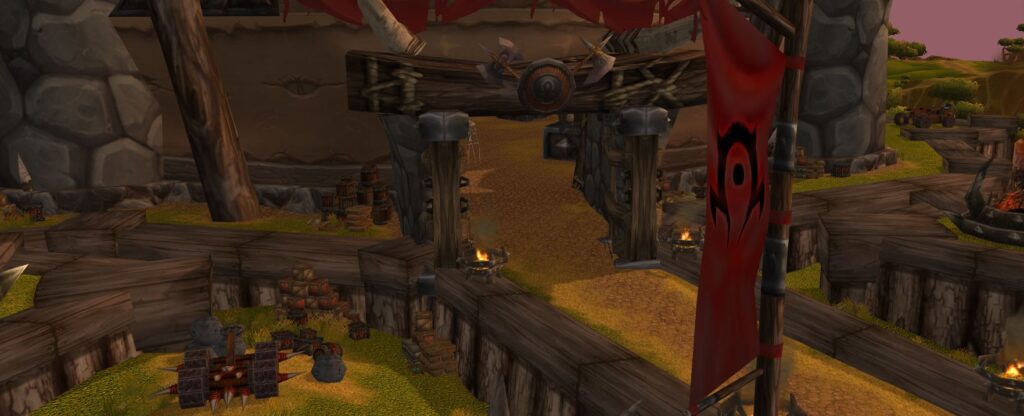- Author: Nevermore
- Date: February 5, 2022
- Updated: February 6, 2022
- Expansion: WotLK Classic
In this section we will be covering PvP rotation in Wrath of the Lich King and discussing your abilities/spells in further detail.
With how player-versus-player combat works in World of Warcraft Wrath of The Lich King, we can only discuss a single-target rotation. That’s because your main focus as a Destruction Warlock will be nuking down one target in the most efficient way, while also dotting down the rest of the potential enemies – an act called “Multi-Dotting”.
Discussing PvP scenarios, we are going to talk about several key playstyle differences, depending on where you face your opponent and how many of them there are – hence the term. And, while Multi-Dotting is a term mainly used for Affliction Warlocks, all the Warlock specializations have access to damage-over-time abilities and have the capacity to spread dots to several enemies.
Player-versus-player requires a bit of a different mindset compared to PvE content; it requires fast thinking, fast reactions, and adaptability. Unlike the PvE scenarios, the encounters here are not scripted – you can expect anything from your enemy. However, this does not mean their actions can’t be predictable, depending on their situation at the moment (and yours).
The Destruction Warlock is a specialist when it comes to “melting” your enemies – by making use of the signature spell of the specialization, the Chaos Bolt, you can inflict extreme amounts of damage on your target. Corruption remains one of the main dots you should apply to the target. However, you should always open up with Immolate, since it empowers your other spells. Conflagrate is another signature spell of the Destruction Warlock: it makes use of Shadowflame or Immolate and can be used like a fire blast, only this spell also dazes the target. However, if you forget to use the glyph for Conflagrate, it will use the effects of Shadowflame or Immolate instead, so the glyph is a must.
Depending on the situation and what type of class you are fighting, curses will have powerful effects. For example, when fighting casters you will want to place Curse of Tongues (we would either say ‘drastically’ or ‘30%’, but not both), reducing their cast speed by 30%. On the other hand, if you are fighting a high-burst type of a physical damage dealer, you will want to consider the Curse of Weakness in order to maintain your survivability by impairing their damage capabilities.
Some situations might call for the use of Curse of the Elements, a powerful debuff that will reduce all of your target’s resistances. Of course, you will want to prioritize this curse when fighting someone with high resistances – usually a giveaway for this is the Gift of the Wild buff.
The standard filler spell you will use as a Destruction Warlock is Incinerate. This spell will be empowered by Immolate, as mentioned previously, and you will often find yourself casting this one while waiting for your Chaos Bolt and Conflagrate cooldowns.
While the Destruction Warlock does not have a proper execution tool, such as the Drain Soul of the Affliction Warlock or the Soul Fire of the Demonology Warlock, it does provide Shadowburn. Shadowburn is a weaker form of an execution tool, usable every 15 seconds. While it might not be as strong of an execution tool the other two specializations offer, the high-burst type damage of the Destruction Warlock will remove the necessity of having one. After all, those fel flames you are throwing at your enemies could be considered an execution on their own, don’t you think so?
The Destruction Warlock benefits from a specific spell ward but, unlike Mages, it does not need to activate it manually – in this case, it’s triggered when receiving damage. The Nether Protection talent offers you the Nether Ward effect, which mitigates 30% of the incoming damage from any spell school type – adding increased survivability as a tradeoff for not having self-healing.
As far as control goes, the Warlock has several tools that will provide you with enough crowd control to wreak havoc upon a target, while also destabilizing their teammates. One of the main tools the Destruction Warlock has for crowd control is Shadowfury, an AoE spell that provides a powerful stun in order to set up a perfect Fear, or to interrupt an essential healing spell.
You can use Shadowfury either at the beginning or middle of a fight to destabilize your enemies.
While not benefiting from Improved Howl of Terror, the Howl of Terror spell still adds extreme utility, inflicting Fear on all targets in a small radius around you. The downside is, as a Destruction Warlock you have a cast time for this ability, so you have to choose your timing right.
Fear is your main crowd control spell and is the trademark of the Warlock. All three specializations can use it, and its effect can displace the target for a potentially perfect setup on his partners. However, do remember that the spamming of Fear will trigger diminishing returns on the target. This means that each time you use it on the same target (just like any crowd control that is spammable), it will cause it to have a slightly lesser effect, up until the point where the target will be immune to the effect – so, be careful with how you use it. A well-placed Fear in conjunction with Demonic Circle: Teleport could provide you a powerful escape, as well as the opportunity to regenerate or to line-of-sight the target. Another type of Fear that is an instant cast that also provides a heal is Death Coil, which you can use as a panic button. Alternatively, it works as a well-placed instant cast Fear that is not affected by diminishing returns, which can help you create a chain of crowd control spells.
As for slowing effects – Shadowflame will help you either chase the target or potentially stop its approach towards you.
The Warlock also benefits from Banish, a very useful spell to use against other Warlocks or Shamans, rendering Demons and Elements unusable.
Having picked the path of a Warlock, we sold our souls for power. So, let’s now talk about the crucial aspect of our class – our demons. After all, we are a pet class, meaning that a lot of our capabilities revolve around them.
Demons have special effects, and they are best used as a counter to the enemy class you are facing. For example, if you are facing casters, it might be best to roll with a Felhunter: it provides a purge type of effect through the use of Devour Magic, both for positive effects on the enemy and for detrimental effects on yourself or your allies. Our fel-doggo also provides the Spell Lock – a Silence combined with a spell lock for the specific school of magic you just interrupted, for 6 seconds.
Another example we will discuss is the Succubus – a valid choice when facing a melee class. This minion will provide you with a powerful incapacitating effect in the form of Seduction, charming your opponents and making them stand still for a specific amount of time. However, it has the same diminishing effects as the Fear spell, so be careful not to spam the ability on the same target. The Succubus pet also offers a powerful debuff that lowers the attack speed of your enemy, called Soothing Kiss. It is a powerful tool when fighting against a Warrior or a Death Knight.
While you might think that the Voidwalker has no PvP utility, there is one spell that can provide you a powerful absorption effect, Sacrifice, which will help you mitigate damage at the beginning of a fight.
What will make all of this possible are the following two talents: Master Summoner and Fel Domination. With Fel Domination you can quickly summon another demon at your command. For example, just like we mentioned earlier, the Voidwalker has a shield ability which you can use to mitigate some damage; you can use this to your advantage by having the voidwalker summoned initially, then using its ability, then immediately triggering Fel Domination to summon a Succubus or a Felhunter. This will allow you to change your pets on demand, depending on the situation, and utilize various combos that the class offers (if your reaction time is fast enough).
Now that we have explained the abilities a bit, we will explain your role as a high-burst damage dealer. Your job is to place yourself in the backline, wrecking “destruction” upon any enemy that might dare to come close to you or your allies. Your job is to dot as many targets as you can, aside from the primary target that you are bursting, and provide crowd control abilities to set up a perfect flawless kill.
Whether it’s a single-target duel, an arena, or a packed battleground, you will want to follow the plan we discussed in the beginning, since the class itself plays the same. It’s all about reaction time and practicing good crowd control, combined with good upkeep of damage-over-time abilities.


